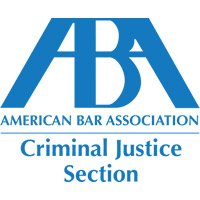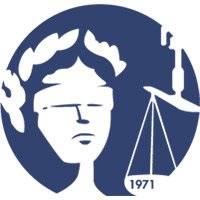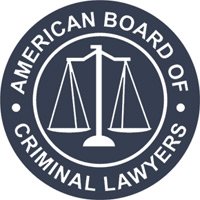SUPPRESSION OF EVIDENCE
FED. R. CRIM. P. Rule 41(f) specifically provides for the filing of a Motion to Suppress and a pre-trial hearing thereon as the appropriate method for-enforcing a defendant’s Fourth Amendment protection against unreasonable search and seizure. Thus, in every criminal case, particular attention should be given to the question of illegally obtained evidence which is discovered by the exploitation of an illegal search or arrest. And where appropriate, a Motion to Suppress should be filed prior to trial pursuant to Rule 41(f).
While this paper does not deal with the evolving substantive law of search and seizure and Fourth Amendment protections, it cannot be over-emphasized that the Motion to Suppress hearing is often the most critical stage in Federal prosecutions, and careful attention should be given to the manner in which the Government obtained evidence against the Defendant.
Even where the Motion to Suppress will not be dispositive of the criminal action, such motion should be utilized in order to limit the Government to proof at trial of evidence which has been obtained through lawful and legal processes. The Motion to Suppress hearing will often serve the additional function of “fixing” the arresting or searching officer’s testimony with regard to other matters critical at the trial on the merits.
Rule 41(e), prior to the 1972 Amendment, established the grounds upon which the motion could be made as follows:
- that the property was illegally seized without a warrant,
- that the warrant is insufficient on its face,
- that the property seized was not that described on the warrant,
- that there was no probable cause for believing the existence of the grounds from which the warrant was issued, or
- that the warrant was illegally FED. R. CRIM. P. Rule 41(f) (Such specified grounds were deleted from the amended Rule 41 in 1972).
A Motion to Suppress is also the proper remedy where evidence has been obtained in violation of the Fifth Amendment (e.g., a confession which was illegally obtained or other evidence obtained as a result of that illegally obtained confession). Smith v. Katzenbach, 351 F.2d 810, at p. 815 (D.C. Cir. 1965); Grant v. US, 282 F.2d 165 (2d Cir. 1960). There is also a statutory procedure for pre-trial suppression of evidence obtained as the result of illegally intercepted electronic or oral communication. 18 U.S.C. § 82518(10)(a). Nardonc v. US, 308 US 338 (1939).
Pursuant to Rule 41(f), a Motion to Suppress is a pre-trial motion and must accordingly be timely filed, FED. R. CRIM. P. Rule 12. Where the motion is not filed prior to trial, there is authority that the trial judge is free to exercise his judicial discretion in refusing to consider same where defense counsel was fully aware of the facts prior to trial and had ample opportunity to present his motion. Small v. US, 396 F.2d 764 (5th Cir. 1968); US v. Allison, 414 F.2d 407 (2d Cir. 1969), cert. den., 396 US 968; US v. Blackwood, 456 F.2d 526 (2d Cir. 1972), cert. den. 409 US 863; US v. Dykes, 460 F.2d 324 (9th Cir. 1972), cert. den., 409 US 889; US v. Hamilton, 469 F.2d 880 (9th Cir. 1972). Be careful to note whether local rules require a memorandum of law in support of such motions, as some courts have refused to consider a Motion to Suppress where the defendant failed to file a brief as required by local rule. US v. Reyes, 280 F. Supp. 267 (S.D.N.Y. 1968).
While it had been previously held that the defense was not entitled to Jencks Act statements of prosecution witnesses after they testify on direct examination at a pre-trial Motion to Suppress hearing. US v. Sebastian, 497 F.2d 1267 (2d Cir. 1974); FED. R. CRIM. P. Rule 12(i), now provides for such pretrial production under FED. R. CRIM. P. Rule 26.2, even if the law enforcement witness is called by the defendant.
While the motion must be in writing, it need not be sworn to or verified. 3 WRIGHT, FEDERAL PRACTICE AND PROCEDURE: CRIMINAL § 673 at 115; US v. Warrington, 17 F.R.D. 25 (N.D. Cal. 1955).
STANDARD FOR REVIEW
The factual determinations by the trial court underlying its ruling on the Motion to Suppress will be accepted on appeal unless “clearly erroneous.” Jackson v. US, 355 F.2d 862, 864-65 (D.C. Cir. 1965); Villano v. US, 289 F.2d 790 (10th Cir. 1962), cert. den., 370 US 947; US v. Ziemer, 291 F.2d 100 (7th Cir. 1961), cert. den., 368 US 877; US v. Gunn, 428 F.2d 1057, 1060 (5th Cir. 1970);
US v. Montos, 421 P.2d 215, 219 n. (5th Cir. 1970), cert. den., 397 US 1022.
And where the appellate court finds beyond a reasonable doubt that the error did not contribute to the conviction, then the trial court’s denial of the suppression motion may be regarded as “harmless error”, even if improper. US v. McCall, 291 F.2d 859 (2d Cir. 1961); Lockett v. US, 380 F.2d 168 (9th Cir. 1968); Smith v. US, 360 US 264 (D.C. Illinois 1959).
PRESERVATION OF ERROR
Where the motion to suppress is denied defense counsel need not renew his motion at trial. 3 WRIGHT, FEDERAL PRACTICE AND PROCEDURE: CRIMINAL § 678 at 142; US v. Whitlow, 339 F.2d 975, 980 (7th Cir. 1968); Waldron v. US, 219 F.2d 37, 41 (D.C. Cir. 1955);
Williams v. US, 263 F.2d 487 (D.C. Cir. 1989); Gurteski v. US, 405 F.2d 253, 261 (5th Cir. 1968), cert. den., 395 US 977. However, care should be taken to be certain that the record reflects that the evidence sought to be suppressed prior to trial is the same as that offered by the Government during trial or the error will not be preserved.
If the motion to suppress is granted, then the tainted evidence is not admissible at the trial of that case, nor in any subsequent trial or hearing. MOORE’S FEDERAL PRACTICE § 41.08[5] at 41-94; Lawn v. US, 355 US 339 (1958).
APPEAL
An order denying a pre-trial Motion to Suppress is not appealable. 3 WRIGHT, FEDERAL PRACTICE AND PROCEDURE: CRIMINAL § 678 at 139; MOORE’S FEDERAL PRACTICE
- 41.08[5] at 41-94; Cogan v. US, 278 US 221 (1929). Such denial must be raised on appeal of the conviction itself in the event such evidence is actually admitted at trial.
The Government, on the other hand, may appeal the granting of a pre-trial Motion to Suppress, pursuant to the 1971 Amendment to the Omnibus Crime Control Act, 18 U.S.C. § 3731. Such appellate determination of the admissibility of the evidence will be made prior to the trial on the merits in the District Court. The Act, however, provides that the U.S. Attorney must certify to the District Court “…that the appeal is not taken for purpose of delay and that the evidence is a substantial proof of a fact material in the proceeding.” 18 U.S.C. § 3731.











